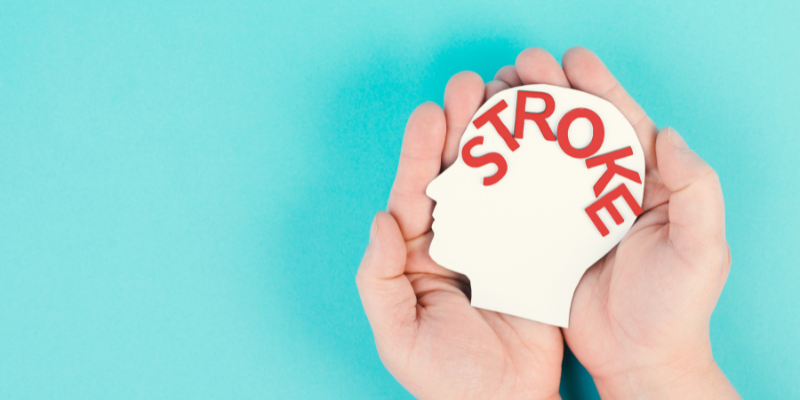Stroke (Ischemic & Hemorrhagic) Medical Management
Stroke (Ischemic & Hemorrhagic) Medical Management

Treatment Range Hospital in Hyderabad offers advanced medical management for both ischemic and hemorrhagic strokes. Our team of expert neurologists and critical care specialists provide immediate interventions such as clot-busting medications for ischemic stroke and blood pressure management for hemorrhagic stroke to minimize brain damage and improve recovery outcomes. With round-the-clock emergency care, we are recognized as one of the leading hospitals for stroke treatment in Hyderabad.
Our comprehensive stroke care includes acute management in the golden hour, followed by long-term rehabilitation programs to help patients regain mobility, speech, and independence. We focus on preventive strategies to reduce the risk of future strokes through lifestyle changes, anticoagulant therapy, and regular monitoring. Each patient receives a personalized plan tailored to their specific condition and recovery goals.
If you’re searching for stroke treatment in Hyderabad, Treatment Range Hospital offers compassionate care, state-of-the-art facilities, and multidisciplinary teams dedicated to supporting patients through every stage of recovery. From emergency care to rehabilitation, we are committed to helping you achieve the best possible outcome.
- Your 6 - Phase health Process
Your Complete Stroke (Ischemic & Hemorrhagic) Medical Management Journey
🩺Phase 1: Symptoms Identification
- Recognize stroke warning signs (Act FAST):Face drooping on one side
- Arm weakness or numbness
- Speech difficulty (slurred or unable to speak)
- Time – call emergency services immediately
- Other symptoms: sudden vision problems, dizziness, severe headache (especially in hemorrhagic stroke)
📋Phase 2: Emergency OPD/Hospital Evaluation
- Immediate assessment to differentiate ischemic (clot) vs hemorrhagic (bleed) stroke
- Neurological exam and vital monitoring
- Review of risk factors: hypertension, diabetes, smoking, atrial fibrillation
🧬 Phase 3: Causes & Risk Factors
- Ischemic Stroke (85%): blood clot blocks brain blood flow
- Hemorrhagic Stroke (15%): ruptured blood vessel causes bleeding
- Risk factors: high blood pressure, high cholesterol, heart disease, smoking, obesity, sedentary lifestyle
🔍 Phase 4: Diagnosis & Investigations
- CT scan or MRI to confirm type of stroke
- Blood tests for clotting profile, sugar, cholesterol
- ECG/Echo to check for heart-related emboli
- Carotid Doppler if carotid artery blockage suspected
💊 Phase 5: Treatment Plan
- Ischemic Stroke (Clot):Thrombolytics (tPA) within 3–4.5 hours of onset
- Antiplatelet (Aspirin, Clopidogrel) & anticoagulants if indicated
- Hemorrhagic Stroke (Bleed):Blood pressure control (IV antihypertensives)
- Neurosurgical intervention if severe bleeding
- Rehab starts early: physiotherapy, speech therapy
💪 Phase 6: Recovery & Long-term Management
- Physical rehabilitation for mobility and strength
- Speech & occupational therapy for functional recovery
- Long-term medications: antiplatelets, antihypertensives, statins
- Lifestyle changes: quit smoking, healthy diet, regular exercise
- Regular follow-ups to monitor stroke risk and recovery progress
Insurance Support










- Why Choose Us
Why patients trust us with their care
- Patient Testimonials
Patient stories of care and recovery










- Frequently Asked Questions
Helping you understand Our healthcare
An ischemic stroke occurs due to a blood clot blocking a vessel, while a hemorrhagic stroke is caused by bleeding from a ruptured blood vessel in the brain.
Treatment should ideally start within the first 3–4.5 hours (for ischemic stroke thrombolysis) for best outcomes. Immediate hospital care is critical.
Commonly prescribed drugs include antiplatelets (aspirin, clopidogrel), statins for cholesterol, and antihypertensives for blood pressure control.
Recovery depends on the stroke’s severity and timely treatment. Many patients regain significant function with early rehabilitation and therapy.
A CT scan or MRI is used to confirm the stroke type (clot vs bleed). Blood tests and heart evaluations are also done.